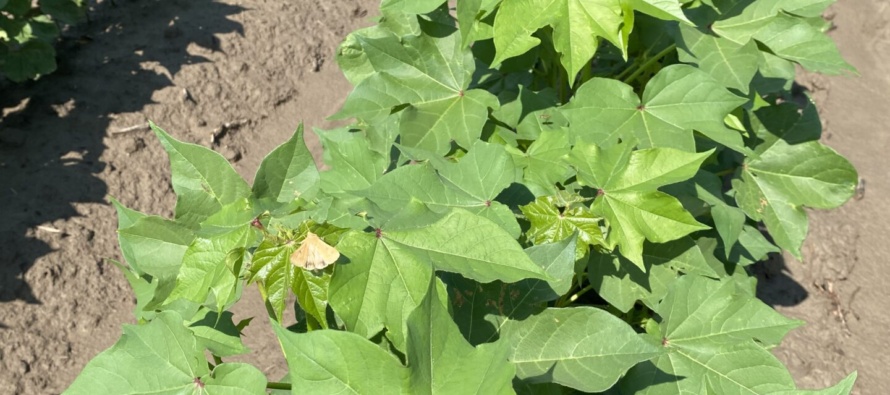2023 Bollworm Management Decisions for Cotton

Related Articles
- Fertilizing Cotton with Poultry Litter 5
- Mississippi Cotton Insect Situation of 2010: A Look Back 3
- Bayer CropScience-O.A. Cleveland Weekly Cotton Commentary 0
Latest Tweets
As expected and right on time, bollworm moths have started trickling into cotton fields across the state. I would imagine since Deltapine 1646 (Bollgard 2) is actively being phased out, 3-gene cotton varieties (Bollgard 3, Widestrike 3, Twinlink Plus) are beginning to fill those acres. Compared to Deltapine 1646 BG2, these three-gene cotton varieties add a third layer of bollworm protection through the expression of the Vip3A Bt protein. As I understand it, this may be the last season we have Bollgard 2 planted at all. With that being said, I feel it is important to discuss how our bollworm management strategies should be modified heading into a world with no more Bollgard 2 cotton.
Unless you are growing Deltapine 1646 BG2, there should be no Bt expressing cotton receiving an insecticide application for bollworm control initiated based on an egg lay. This threshold was developed due to the protein slippage of Bollgard 2 and allowed for Bt-resistant bollworms to hatch out into an insecticide. This prevents a significant amount of damage from occurring since bollworms are fairly resistant to the two Bt proteins in Bollgard 2. Because of this, I think many folks will likely continue using this threshold in newer cotton varieties. With the introduction of Vip3A into the picture, we are not currently seeing resistance issues like those of Bollgard 2, therefore this practice is not warranted at this time. With that being said, this doesn’t mean a 3-gene expressing cotton variety will never need an insecticide application. We do know environmental factors such as drought stress can affect Bt expression, however, these situations will need to be addressed on a case-by-case basis. Most of the time when we receive “VIP breakthroughs”, some kind of external factor is limiting VIP expression. The odds of having a significant resistance breakthrough event right now is unlikely based on historical and current resistance monitoring efforts. Going forward, thresholds in 3-gene cotton include 4 live larvae (greater than 1/8 inch) / 100 plants OR 6% fruit damage of any kind. Keep in mind, bollworm neonates must feed to ingest the toxin. Superficial feeding (bracts, boll etching, etc.) is a sign bollworms are there but understand significant economic damage is not occurring hence the necessity for a larval size threshold. These thresholds should be followed if you expect bollworm-targeted insecticide application to provide any economic returns in 3-gene varieties!
Below are some 2022 data from 5 trial locations across Arkansas, Louisiana, Mississippi, and Tennessee. This trial included Non-Bt, Bollgard 2, Bollgard 3, and Widestrike 3 cotton varieties. Half of the plots received a diamide insecticide application when a bollworm egg lay occurred, the other half of the plots were left untreated. This gives us a look at what a diamide insecticide treatment brings to the table on each technology when applied on a 20% egg lay. Notice the diamide insecticide applications were only economically justifiable in the Non-Bt and Bollgard 2 varieties. There were no yield differences in the VIP3A expressing cotton varieties when a diamide was applied for bollworm control on an egg lay scenario. These data indicate unless you are growing Non-Bt or 2-gene cotton, the egg threshold is providing zero economic returns, losing you money.
I will finish this post up by explaining how important it is diamide products continue to work into the future. Spraying broad acres of diamide products where they are not warranted will lead to decreased returns for the grower and premature, avoidable resistance issues developing in bollworms. This is a serious lose-lose situation and can be easily avoided. If an established threshold is met in 3-gene cotton, spray it as warranted. Do not let a large egg lay or neonates in terminals scare you into an application. The more we use diamides, the more selection pressure we put on the products. It is only a matter of time before diamide sprays are warranted in 3-gene cotton varieties. We need to ensure we still have the chemistry at our disposal when the time finally comes.





Let me tell You a sad story ! There are no comments yet, but You can be first one to comment this article.
Write a comment